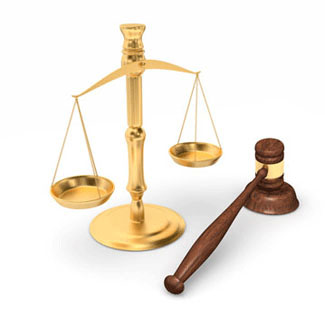
Johnson & Johnson's Talc Asbestos Denial is Weak
Lawyers are spinning the results of recent asbestos tests as a positive for the company when they are the straw that broke the camel's $750 million back
Friday, February 28, 2020 - Johnson & Johnson's "asbestos-fre"" categorization of talc's contamination with the cancer-causing compound fails to hold water. There is a huge difference between being "asbestos-free" and testing and not finding the carcinogen. Experts have concluded that the testing methods that Johnson & Johnson and the cosmetics industry have employed to test for asbestos are inadequate and the FDA is on the verge of recommending that the entire cosmetics industry use the Heavy Liquid Separation (HLS) asbestos testing technique which is a more sensitive method than used in the industry. Talcum powder cancer lawsuit lawyers offer a free no obligation consultation before filing a claim and do not collect any money unless they win a case for you.
Johnson & Johnson recently told CNBC that the world's most popular baby powder was completely safe despite the FDA tests showing otherwise. One should keep in mind that experts agree that there is no safe level of asbestos. "Johnson & Johnson said ... that more tests showed that Johnson's Baby Powder was free of asbestos after U.S. Food and Drug Administration investigations had found trace amounts of the material." Not finding asbestos is much different than the product being free of the substance as microscopically small samples are tested. More strict tests of Johnson's Baby powder and talc-based cosmetics products nearly always come back positive for asbestos. The recent tests that denied the FDA reports read like a page from 1984 stating that "company-sponsored independent tests found no trace of asbestos on the same samples that the FDA used, "except a little that could have come from an old air conditioning unit in the lab where the tests were conducted." (1) Asbestos and talc are mined in open-pit mines adjacent to one another all over the world and the minerals are blasted with explosives into the air and carried to settle and intermingle with each other. Entire towns in the neighborhoods where people live and work near open-pit asbestos mines have developed extremely high numbers of mesothelioma cases. Johnson & Johnson may want to replace the iconic baby image on bottles of Johnson's Baby Powder with one of George Orwell.
Dr. Longo made his opinions about talc being contaminated with asbestos crystal clear in testimony before a Congressional Committee convened to address the subject recently. Mesothelioma.com reported on the testimony: "analyzed samples of Johnson & Johnson's baby powder from the 1940s to the 2000s, along with the company's current products. He tested the products for asbestos using the Heavy Liquid Separation (HLS) technique, which is more sensitive than the testing methods used by Johnson & Johnson. Overall, Dr. Longo discovered 65% of all samples tested positive for asbestos."
Dr. Longo testified: "The cosmetic talc industry has, in that time, accumulated hundreds, if not thousands of testing results that report no detectable or quantifiable asbestos. These reports, regarded by the manufacturers as "negative," are very misleading as they result from analytical and methodological techniques with poor detection limits."
 OnderLaw, LLC -
OnderLaw, LLC -